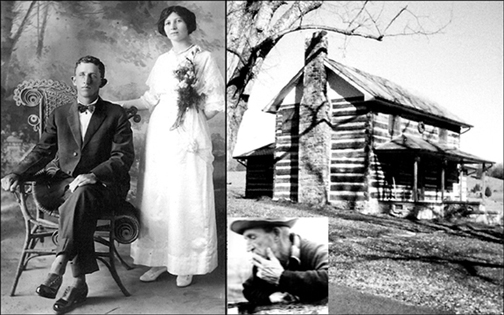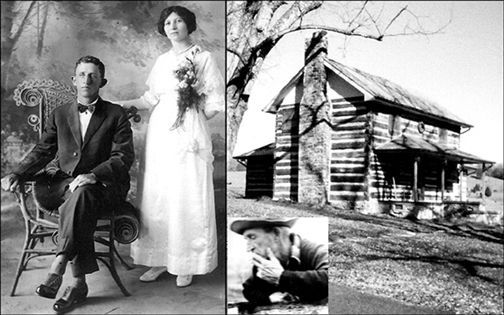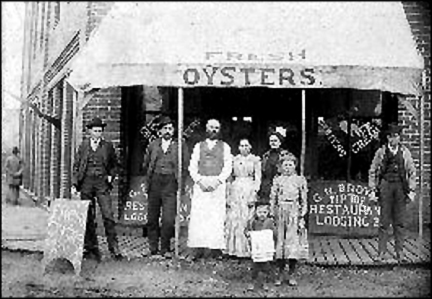Paul Gill, a frequent responder to my history articles, has conducted a tremendous amount of research on several local families that include Weaver, Sherfey and Feathers. He put me in contact with Sandy Mills for a column about her grandfather, Arlie Anderson Weaver.
Sandy and her siblings, Jeanne and Marta, fondly remember Arlie as a gentle, soft-spoken man who never raised his voice. He was born in 1887 in Bristol, Tennessee and died in 1961. He married Ira Beatrice Crumley with whom he raised four children, three girls and a boy.

Soon after the death of Arlie’s father, Jacob Emanuel Weaver, in 1919, the couple acquired the old Frederick Weaver home where Arlie was born. The house, reportedly built around 1770 by the Beeler family, resided in the Weaver clan for 162 years until it was sold in 1982 shortly after the passing of Ira.
The stately old home still stands but has been renovated over the years. It was located on Weaver Pike across from Weaver School, Weaver Church and Rader Store, which was once owned by Arlie’s father. Sandy attended the school until the mid-8th grade.
Ms. Mills obviously possessed a passion for the old home place as evidenced by her detailed description of its exterior and interior features. It had a huge chimney and fireplace made of stone. The front steps were very wide and also constructed of stone. A swing hung on the front porch.
Sandy meticulously described the interior of the house with its beautiful fixtures and spacious rooms: “Inside was a large living room with a standing radio, a short-wave radio and a piano. The latter had a seat cover that slipped when I sat down on it. On a large wooden desk sat a very old typewriter with glass keys on it. A bedroom was located to the left, though I suspect it was once a parlor or perhaps a second living room. The telephone was in this room. My grandfather kept frequently used phone numbers written on the wallpaper beside the telephone. He had no need for a Rolodex.”
Sandy recalled that the dining room was back of the living room: “My grandmother served Sunday dinner there on pink depression glass dishes. In the corner was a curved glass cabinet, which held special pieces and a set of dishes that Glenn Weaver, my uncle, brought back from the Korean War.
“Next was the kitchen with a cabinet, which had a flour mill inside one door. A built-in cupboard occupied the back corner and a table was in the middle. On it was always pear butter or similar food item in a covered dish. My grandfather ate there, at least when I was present. There was a closed-in back porch beyond the kitchen. This is where he always marked our height on the doorframe, labeling the name of the child and the date. Thus, he could show us how much we grew from visit to visit.”
The granddaughter said that access to the upstairs was achieved using a stairwell that was opened from the downstairs bedroom. Climbing the steps revealed three bedrooms. The one her grandfather slept in had a feather bed that was never made. He logically reasoned that it was foolish to make the bed and then mess it up again at bedtime. Each bed upstairs had a light hanging on the headboard and the closet areas were curtained. Sandy recalled that her grandfather’s Mason sword always hung on one bedroom wall.
Sandy concluded her note: “There was a cellar accessible from outside, which held canned foods that were ‘put up’ during the summer months to be enjoyed until the next season. My grandparents ran a dairy farm. The barn was down a little way from the house with a large spring in between. My cousin and I played in the barn frequently in the summer.”
Paul Gill sent me a photo dated May 1904 of the Tip Top Restaurant that once operated in Johnson City. He believes it was near Fountain Square. Visibly noted are unpaved streets and wooden sidewalks. Paul said the man in the apron is his cousin and storeowner, George R. Brown. Standing beside him on the right is his wife. Their son, Melvin, and daughter, Phoebe, are in front of them. Several advertisements can be read: G.R. Brown, Tip Top Restaurant, Ice Cream, Lodging 25 Cents and Fresh Oysters. Paul said that when autos became plentiful, George opened a service station in town. He would like to know if anyone could provide additional facts to share. An old City Directory identifies George’s wife’s name as Sallie and their residence on Boone Street at W. Watauga Avenue.

